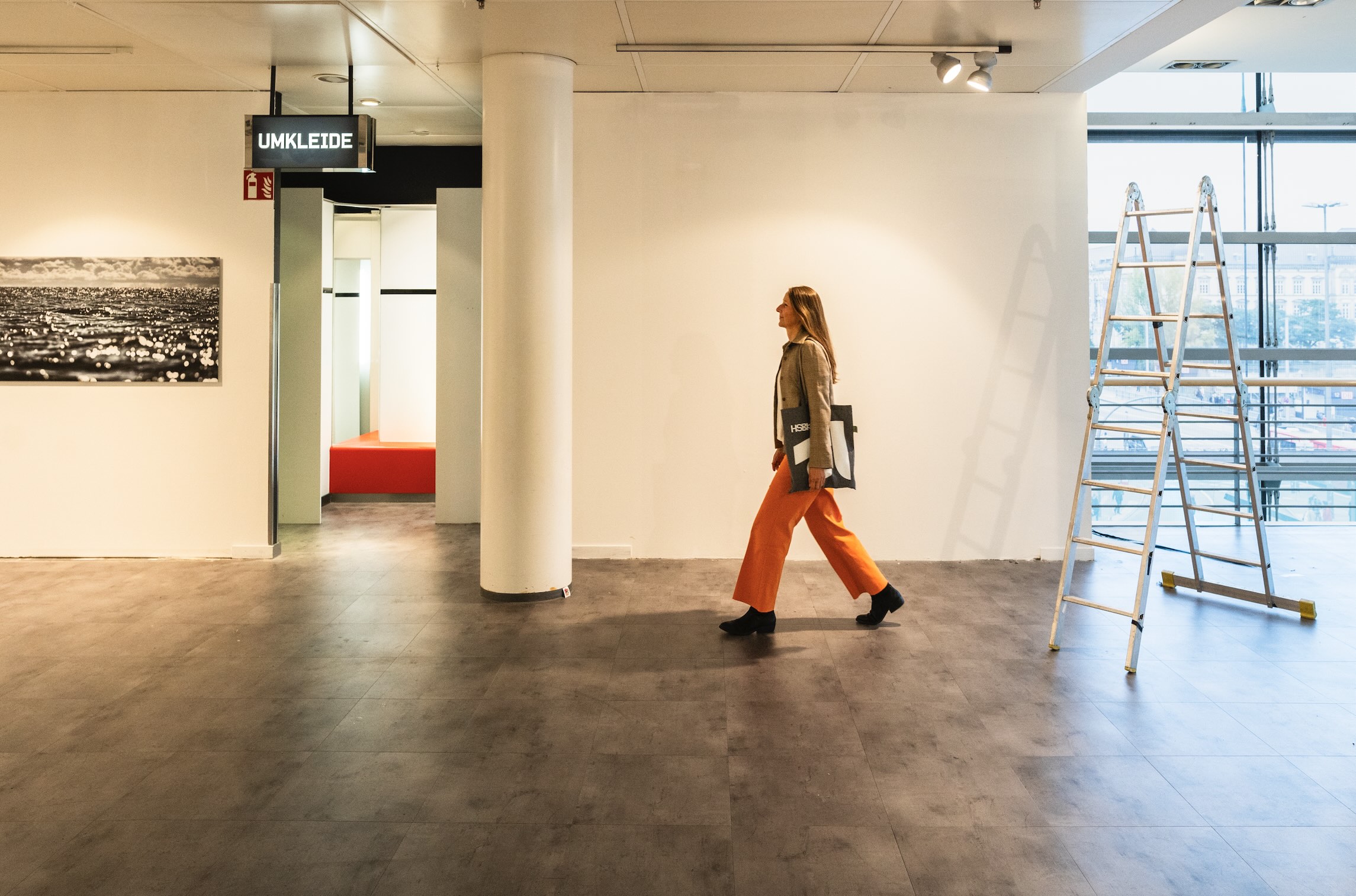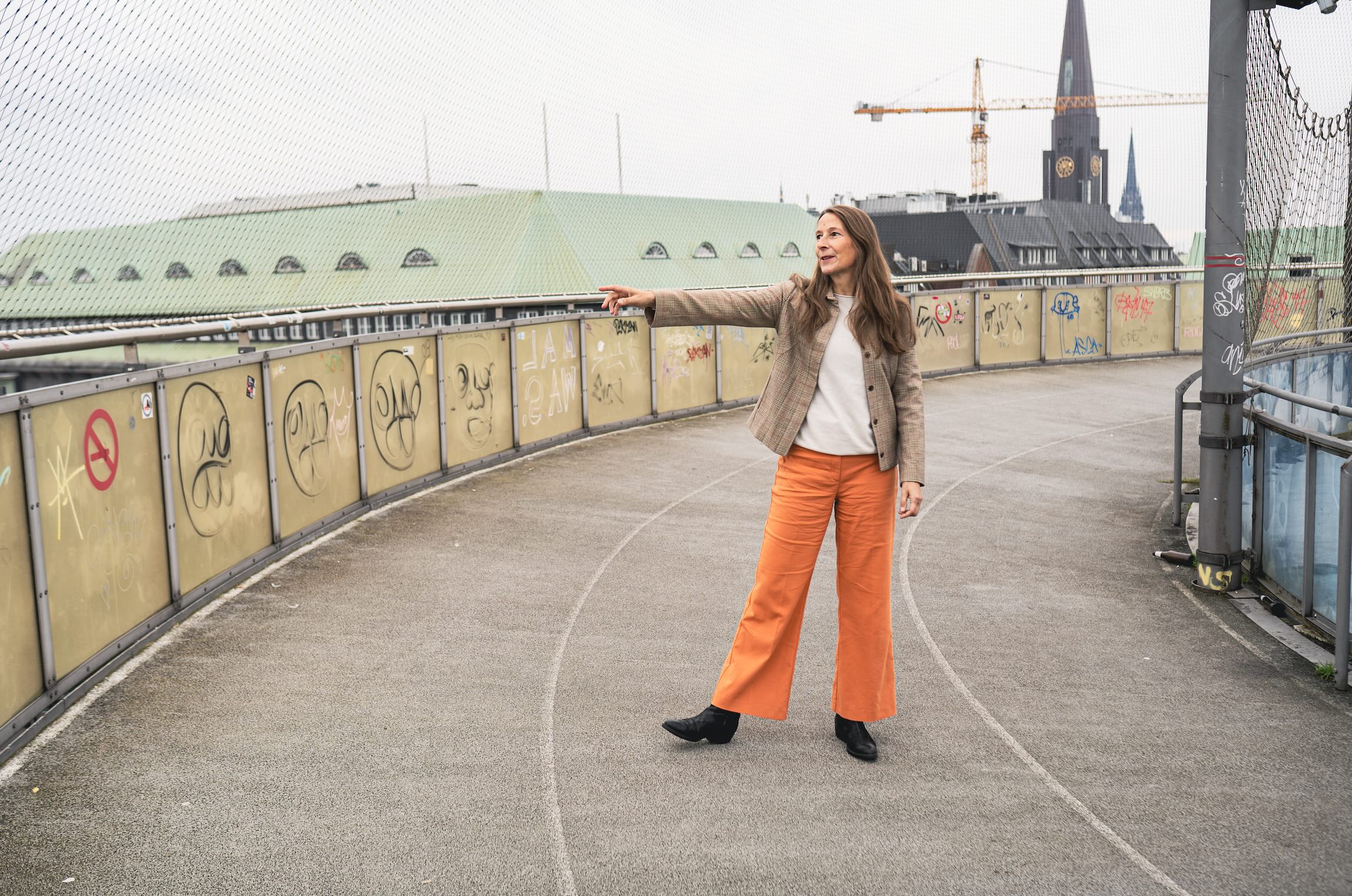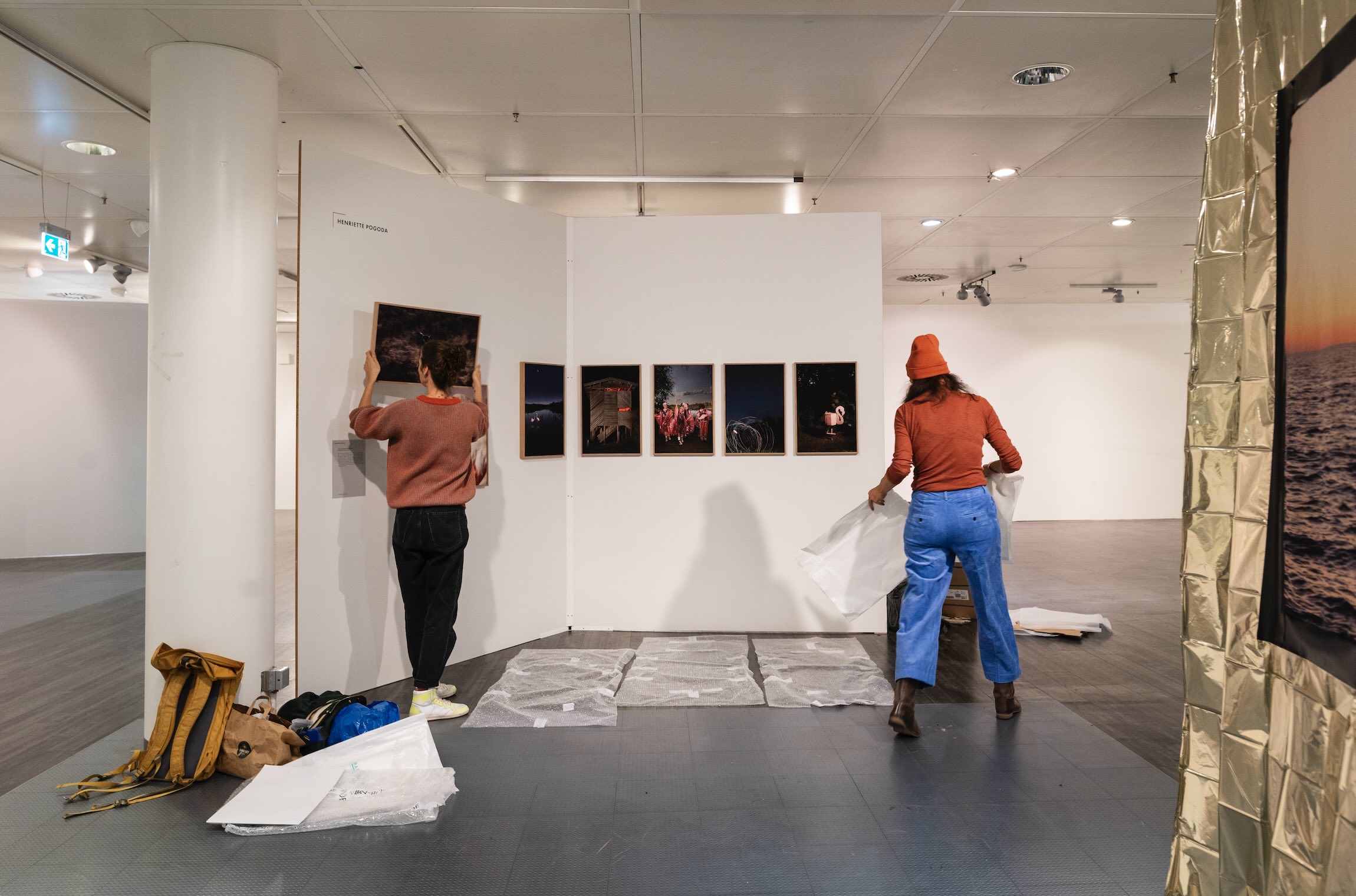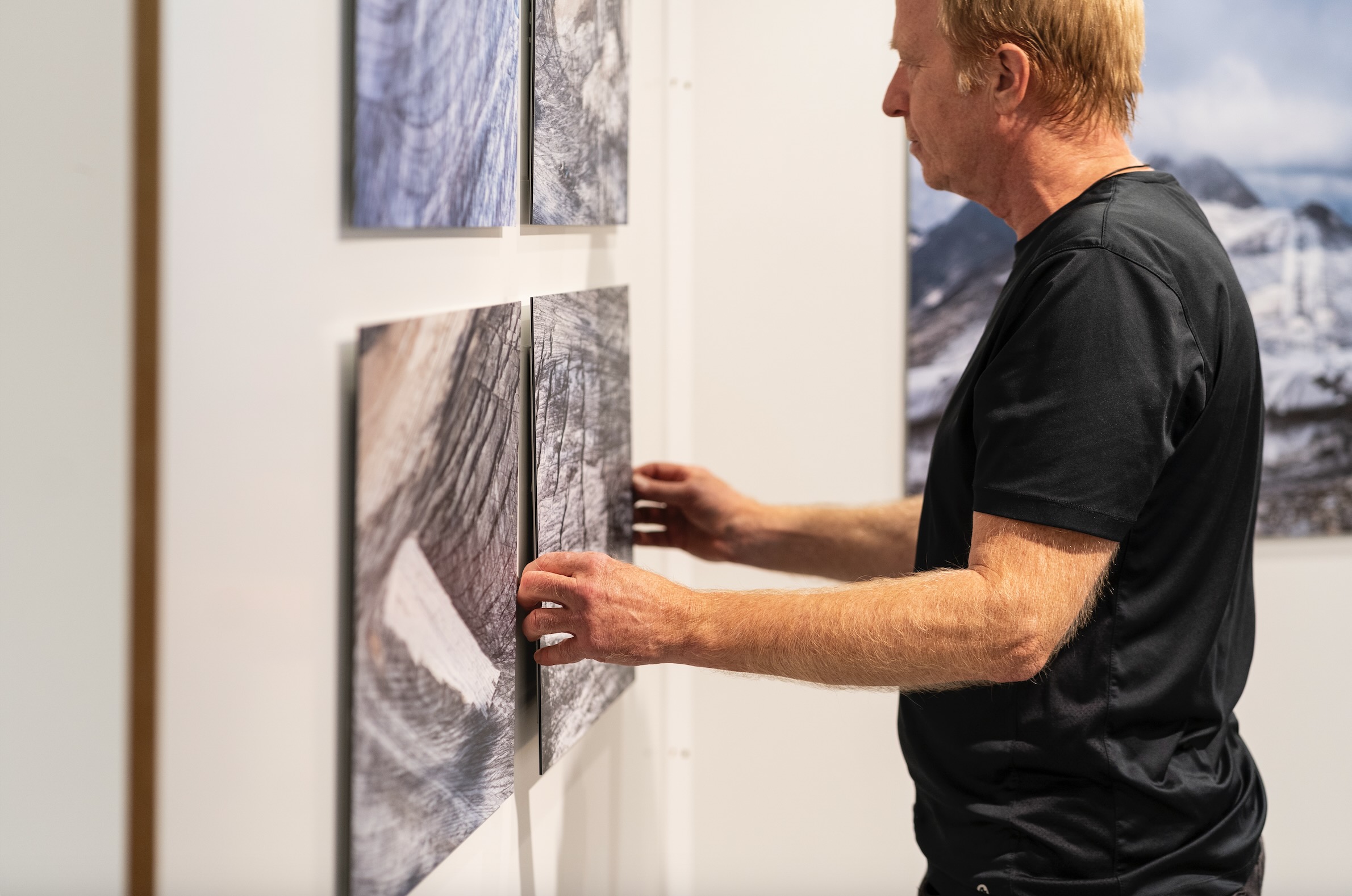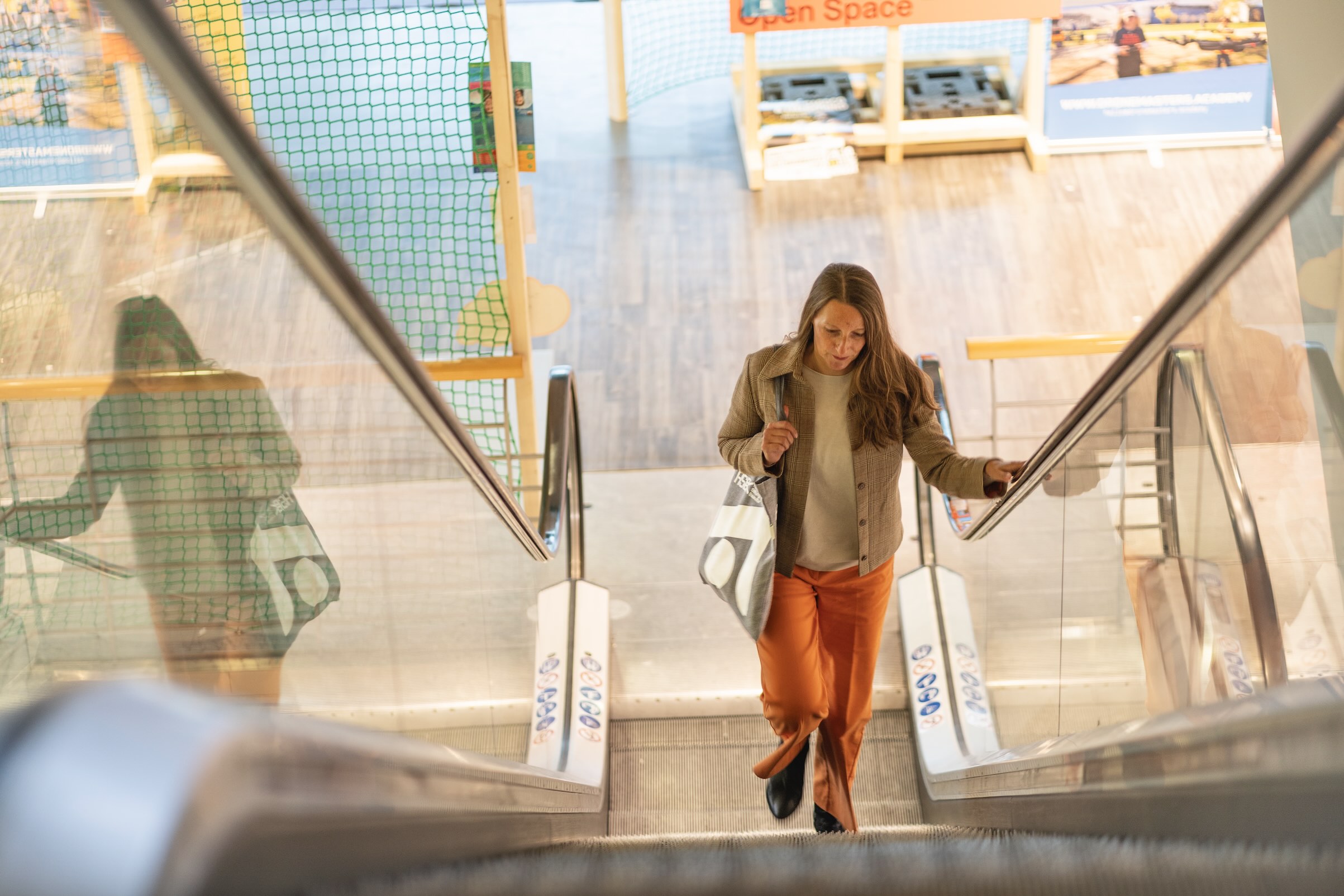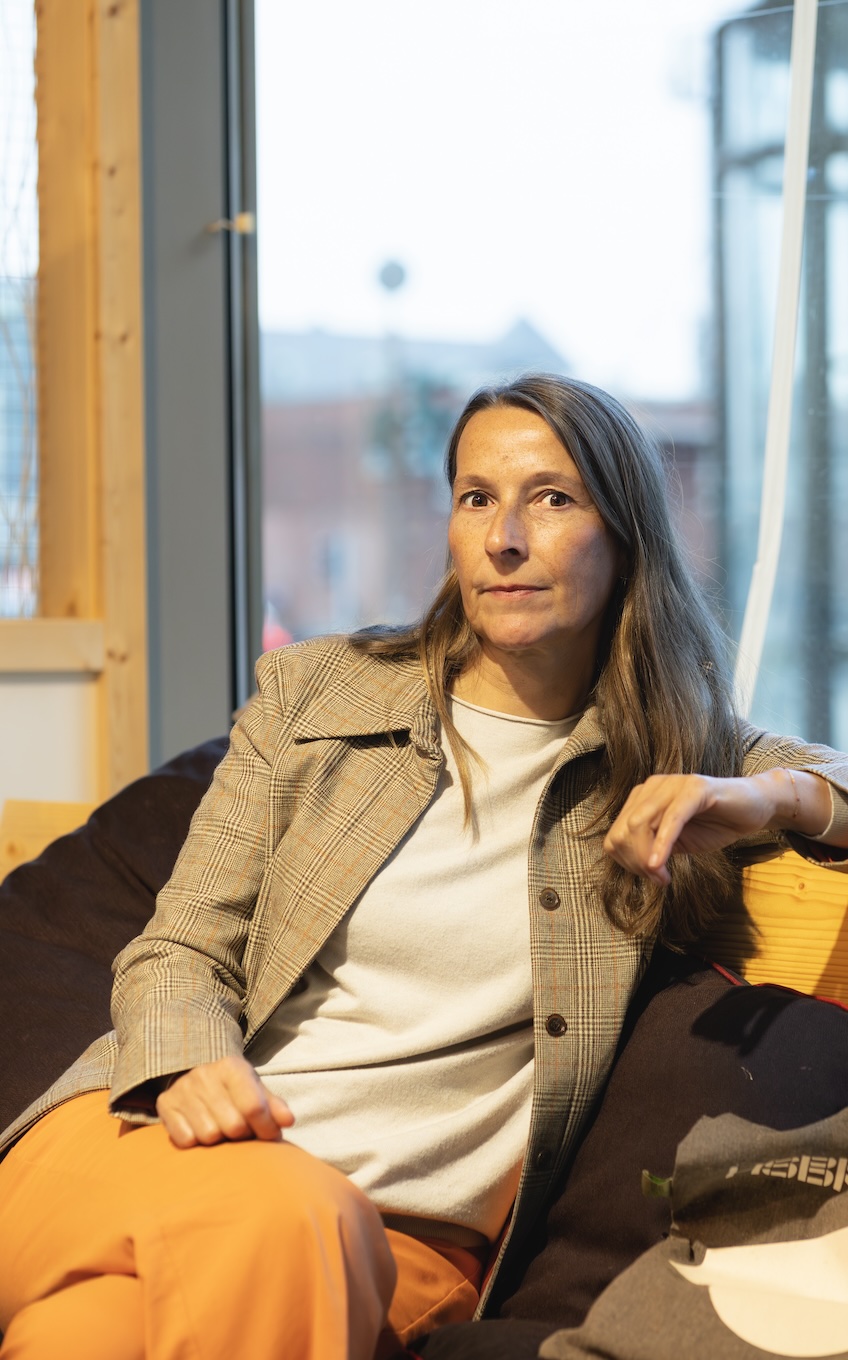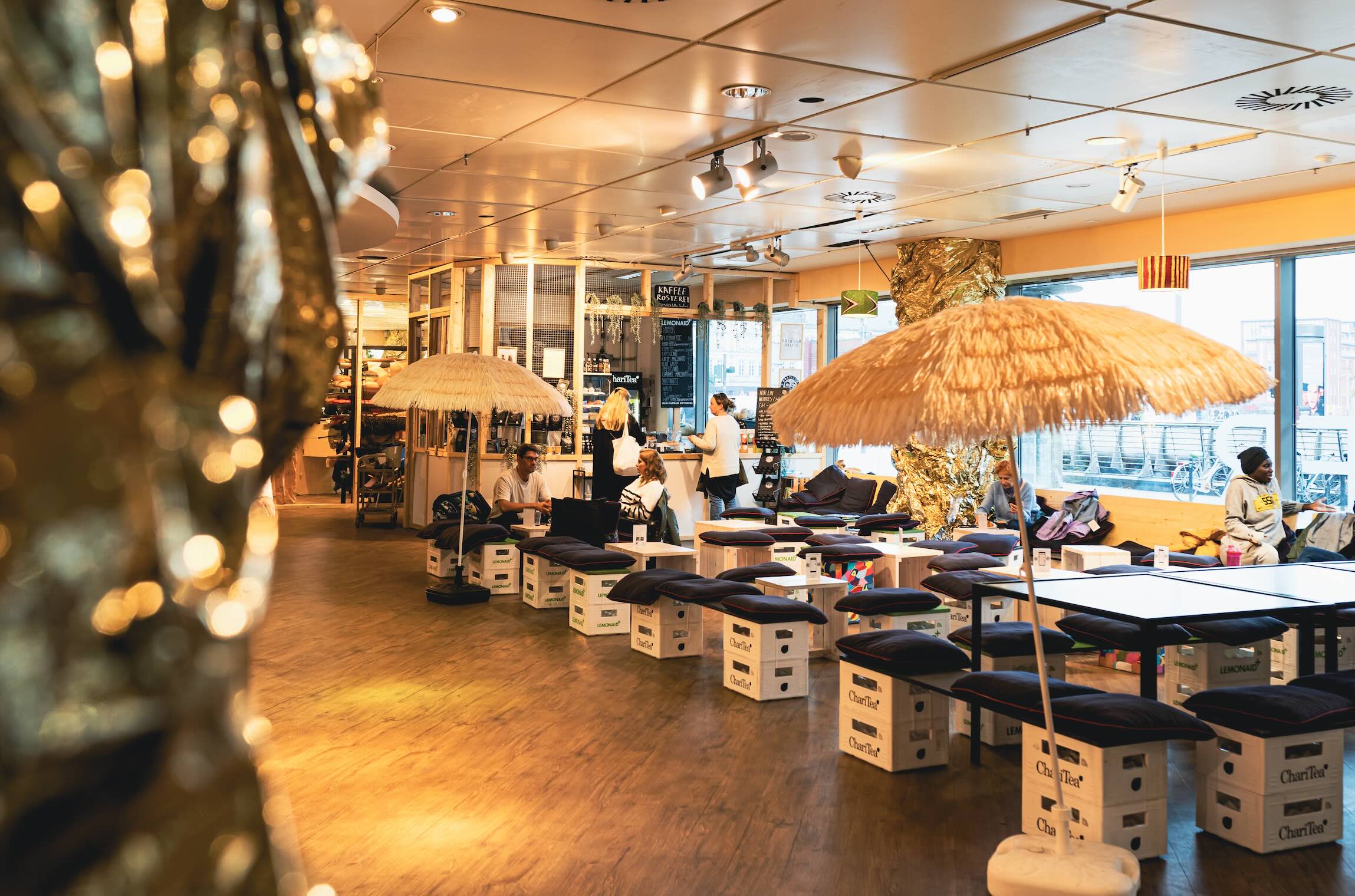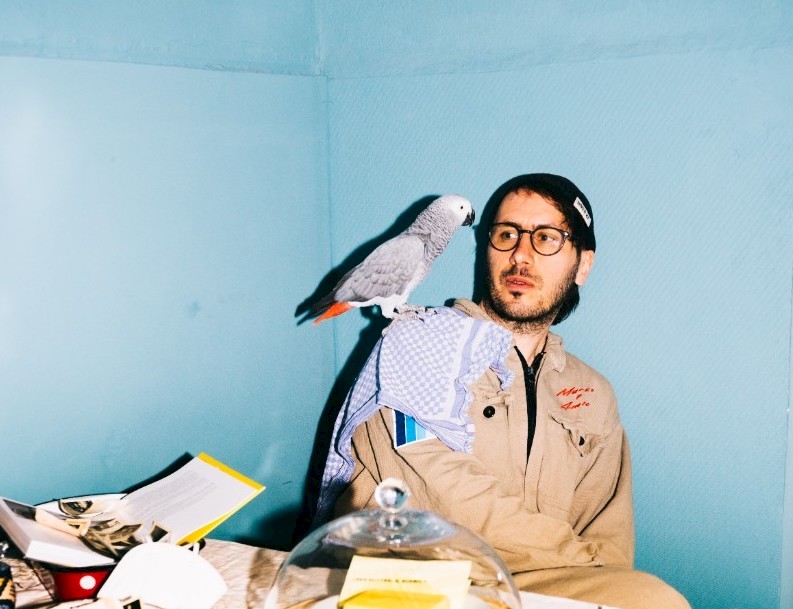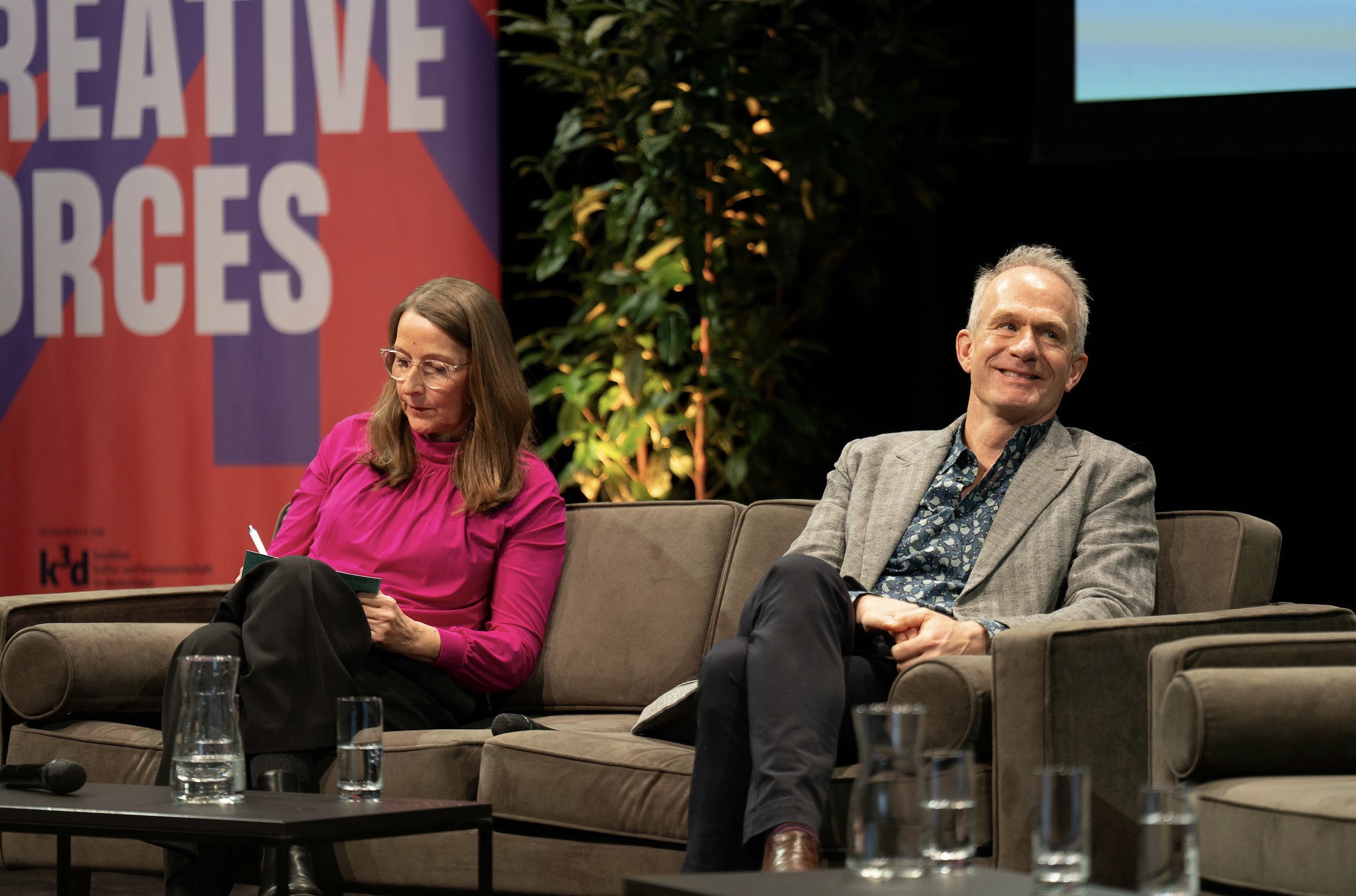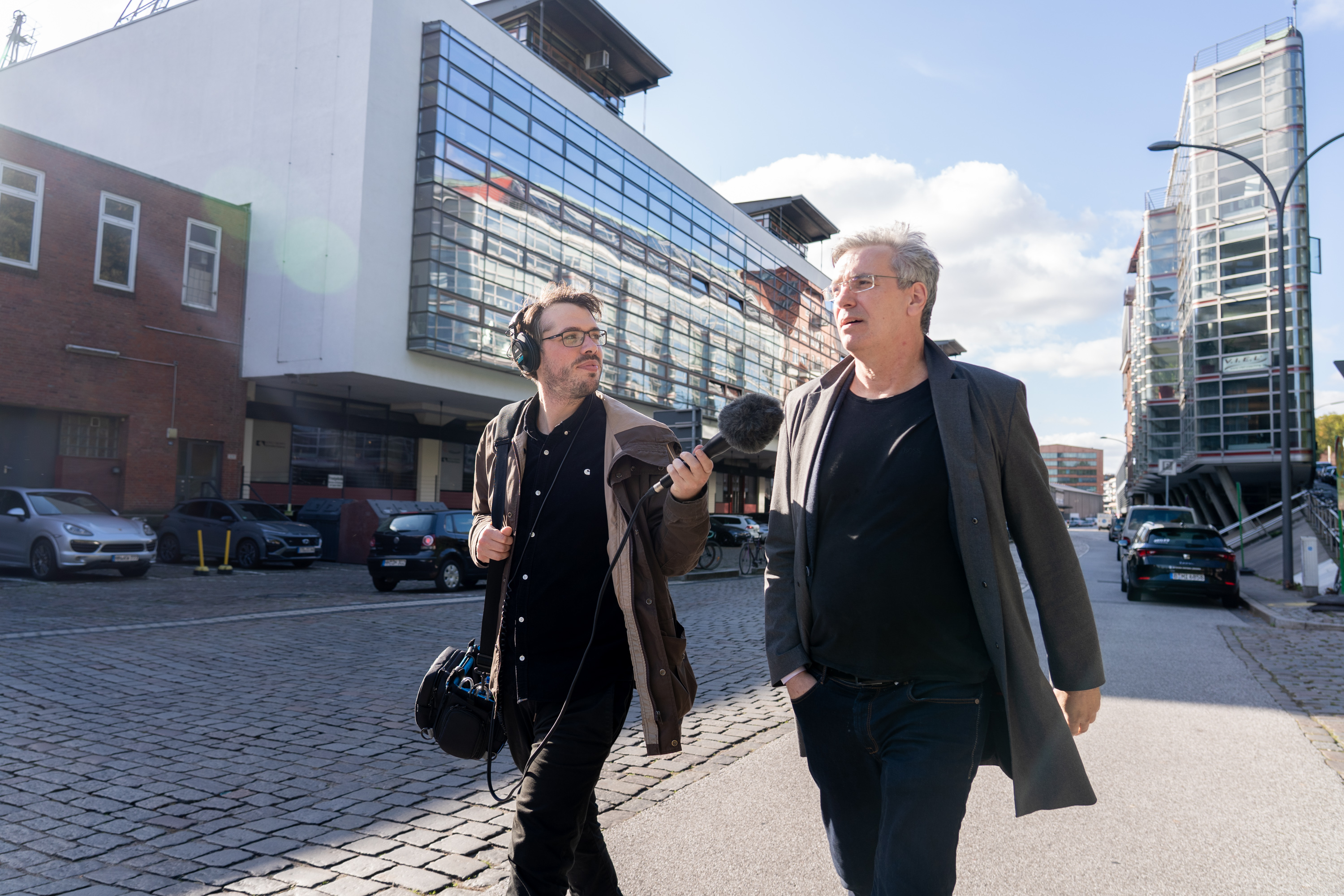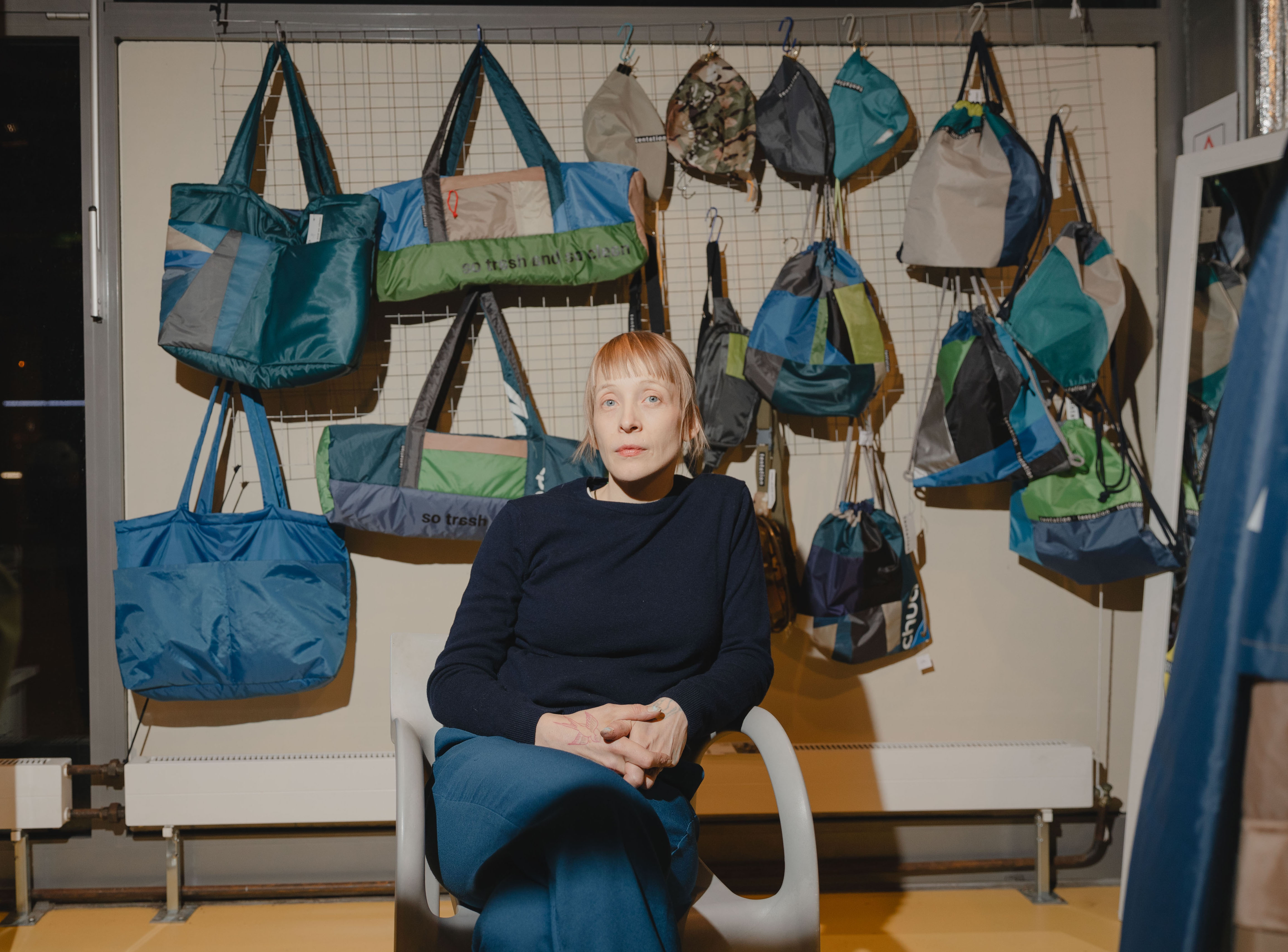Tina Unruh remembers the roller skating rink on the roof of Jupiter from her youth. Back then, the department stores' on Hamburg's Mönckebergstraße shopping street was still called "Karstadt Sports". After its closure in October 2020, the building stood empty for almost two years - only to reopen as Germany's largest creative interim use. Since summer 2022, people have been shopping for sustainable fashion, looking at art, doing yoga after work or dancing on Sundays at Jupiter.
The project, which is funded by the City of Hamburg, is a reaction to the development of the city centre. In March 2023, retail sales on Mönckebergstrasse were still around five per cent lower than before the pandemic. Just out of sight of the roof terrace, an 80,000 square metre mega shopping centre is being built in HafenCity, which will attract more shoppers from the city centre - and thus further increase the pressure on retailers. The use of office space in the city centre is also declining. While the vacancy rate was at a low of 400,000 square metres in 2019, it will be 561,000 again in 2022.
